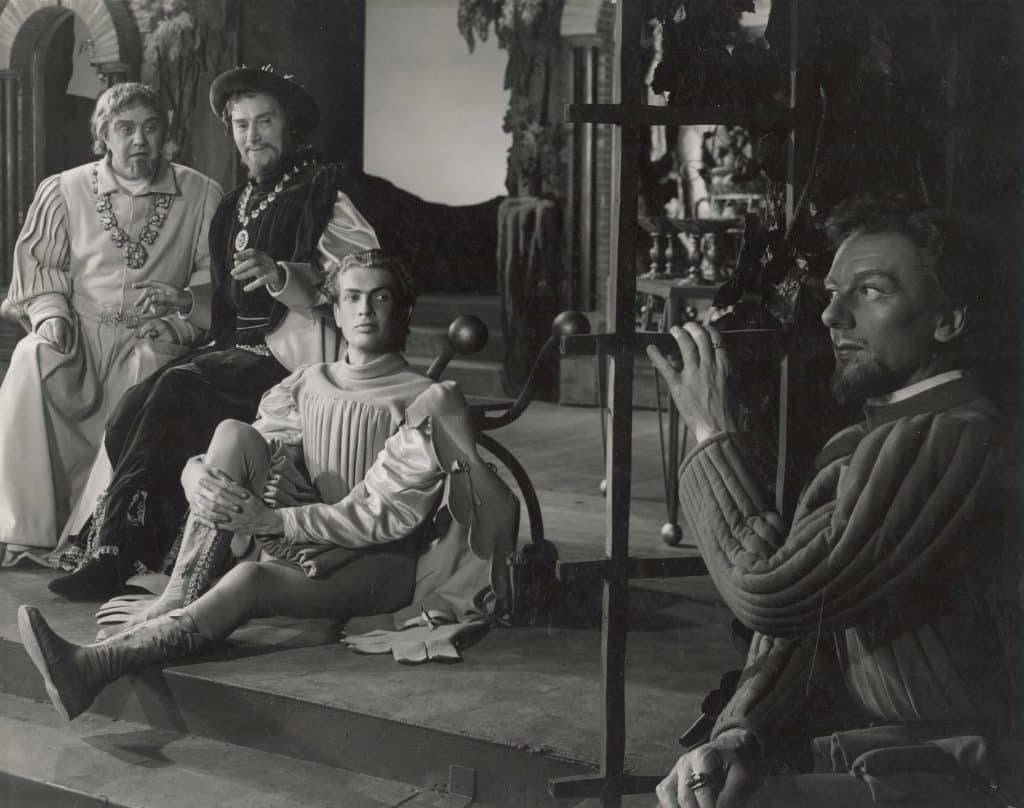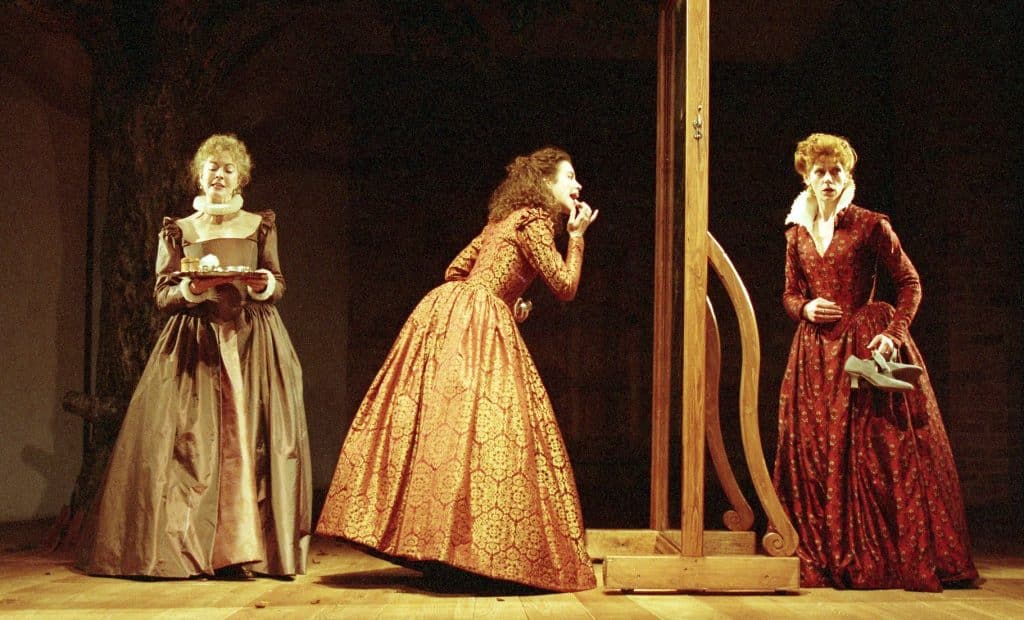Shakespeare used many methods to create comedy throughout the gulling scenes. The two gulling scenes show first Benedick, then Beatrice, being tricked into thinking that the other is madly in love with them. Shakespeare succeeded in bringing different forms of amusement into the scenes, through irony and exaggeration – amongst other techniques. Together, these produce two scenes that are very amusing to watch.
One of the main techniques that Shakespeare utilised in these scenes was dramatic irony – where something is obvious to the audience and yet there are people on the stage who are completely oblivious to that certain fact.
Act 2, Scene 3
For instance, Benedick believes that he is not meant to be hearing the conversation between Leonato, Don Pedro and Claudio, when in reality the audience can clearly see that the conversation is part of the gulling – and it was planned for Benedick to overhear. Some of the parts that show this are when Benedick exclaims ‘Is’t possible?’ after hearing of Beatrice’s apparent love for him, and his statement that he ‘should think this a gull, but’, which is funny as he is so close to the truth, and the audience knows it.
Act 3, Scene 1
Another example of dramatic irony is when Beatrice is shown to “stealthily” sneak into an arbour. She thinks she isn’t seen, however, it is obvious to the audience that Hero and Ursula knew she was there – and that it was a part of her gulling. These factors show how much dramatic irony was used in the gulling scenes to create comedy.
Another technique that was used in the gulling scenes was the use of metaphors. Metaphors played a large part in the comedic aspect of the gulling scenes, as the way it compared the characters to animals would have been very amusing, especially considering the species that were chosen.
Act 2, Scene 3
For example, Claudio talks about Benedick eavesdropping by stating that ‘the fowl sits’. This comparison to a bird – one that is often hunted – shows how Benedick is seen as prey. He is completely oblivious to the fact that he is being gulled, just like a fowl when being hunted down by a predator. A similar inference can be noted when Benedick is compared to a fish. Making sure that for once Benedick wouldn’t overhear, Claudio said, ‘Bait the hook well, this fish will bite.’ This shows how he knew that if they said the right things, Benedick would believe their words to be true, and therefore would ‘bite’ – and the gull would have been successful.
Act 3, Scene 1
Fish aren’t known for their intellect, and the fact that Claudio believed that Benedick could be caught as easily as a fish denotes him as a fool, which is very amusing for the audience. Beatrice is also compared to a bird – which shows a link between the two scenes. However, this time she is described as having a spirit as ‘Coy and wild. As haggards of the rock’. This is also a comparison to a bird, however, the words coy and wild portray her as very different to Benedick – whilst he was foolish and oblivious, she is savage and untameable.
Shakespeare also used lots of insults in the play to create comedy. Beatrice is constantly slandered throughout her gulling scene, and her reactions to these are quite comedic. As an example, after Hero and Ursula leave the scene, Beatrice emerges and exclaims, ‘What fire is in mine ears? Can this be true?’’
Hubris change also plays a huge part in the comedic elements in the gulling scenes. Benedick is shown to despise the idea of love and marriage. He openly states this on many occasions, including when he says that lovers are fools and that he wanted nothing to do with love. However, after so long of being stuck with the idea of love being foolish, he suddenly falls hopelessly in love with Beatrice after being gulled. What makes this comedic is that the switch is so sudden and filled with hyperbolic expressions of emotion. This is shown in his mannerisms towards Beatrice after finding out she loves him.
To conclude, Shakespeare’s comedic techniques worked very well in the gulling scenes, as there were many comedic moments that would have amused the audience. His ability to employ this comedy in such a variety fashion, keeps the audience entertained and engaged throughout the entirety of the play.


